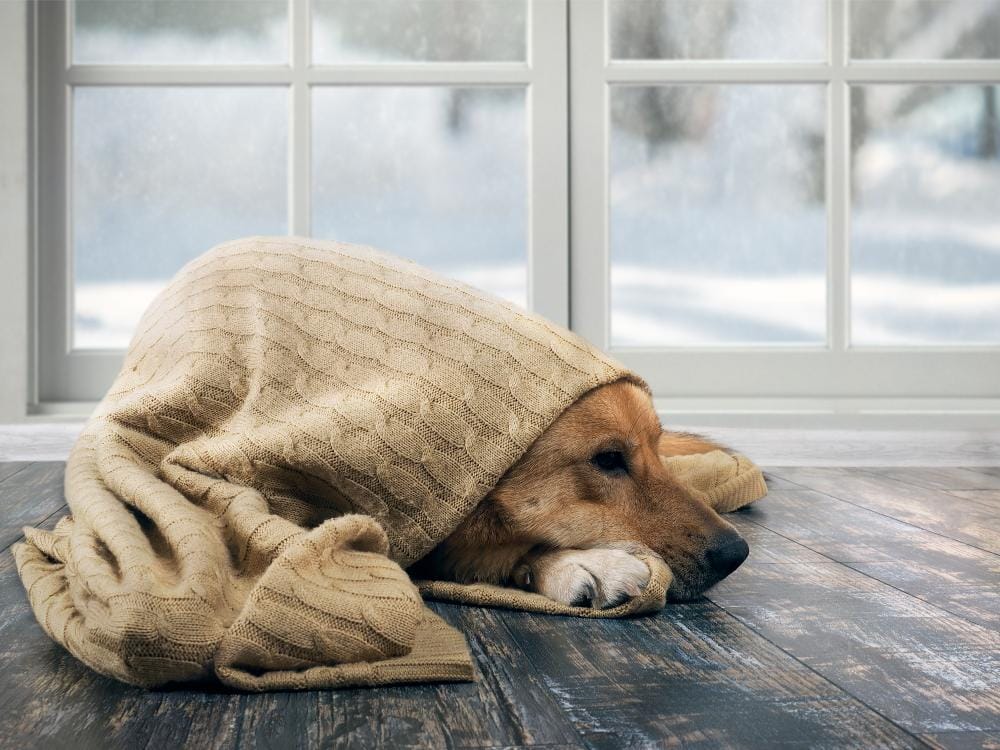Preparing Your Senior Pet for Colder Weather

Many aging pets tend to take a cautious approach to colder temperatures, but that doesn’t mean they can’t enjoy sweater weather. A few minor adjustments can make all the difference to a pet’s ability to enjoy the fall weather. By anticipating the needs of a senior pet, you can add warmth, comfort, stability, and enjoyment throughout the fall and approaching winter weather.
A Gentle Touch
As your pet grows older you may start to notice decreased mobility/flexibility, stiffness endurance, sensitivity to cold, and changes to their weight. Around age 7 (depending on breed and health history), slight changes may become more obvious with time and as the result of strain and/or injury.
How Temperatures Affect Pets
Senior pets are prone to joint pain. This discomfort can impact how much and how often they move around, and colder temperatures have a way of aggravating and inflaming pre-existing arthritis.
If you notice any of the following signs of arthritis, please give us a call:
- Limping or reluctance to get up and move around
- Anxiety around stairs
- Changes in habit, such as opting out of jumping on the bed or couch
- Reduced interest in playing or exercising
- Whining or whimpering
- Sensitivity to touch
After an exam and discussion about their behavior, we may prescribe pain relief medications, supplements for joint care, and alternative treatments that reduce inflammation. Laser therapy, acupuncture, and swimming can have a positive impact on senior pet arthritis.
Warm and Cozy
An important strategy for minimizing joint pain is to keep older pets warm. You can do that by:
- Providing them with self-warming bedding and blankets, keeping a heating pad or hot water bottle at the ready, and managing drafts around their preferred hang out spaces.
- Keeping an eye on air movement throughout the house.
- Providing ramps, non-slip mats, and raised food/water dishes.
- Adjusting your pet’s daily exposure to the outdoors throughout the fall and winter. Since we have fewer hours of daylight, move their daily walk to the middle of the day when it’s warmest.
- Investing in a good sweater, vest or jacket, and if they’re open to them, outfit your pet with grippy shoes/boots for walking through cold, wet, and even icy conditions.
- Trying not to push a senior pet beyond what they can, or should, do while working out.
- Pivoting towards mentally-stimulating indoor games or puzzles to keep their mind sharp.
- Being mindful of their food portions and treat consumption. Too many calories, and not enough exercise, can lead to weight gain and further pressure on painful joints.
Cold Weather Pet Care
Senior pet wellness exams have the most impact on health and longevity when scheduled twice a year. This helps us catch any age-related problems early, provide effective treatment, and inform owners of the possible limitations in senior pet mobility and organ function.
Please call us at (408) 402-3071 with any questions or concerns. Our staff is always here for your pet.
